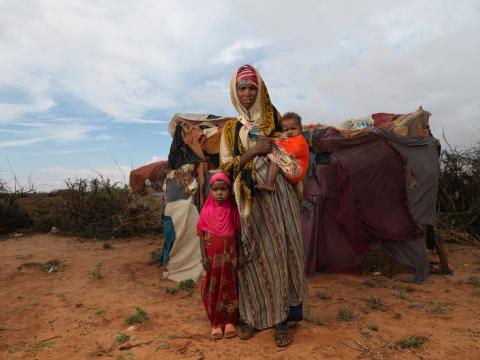Land degradation – created by conflict, driving conflict

- Areas experiencing land degradation are 24% more likely to experience conflicts, and conflicts that last 23% longer, having an even greater impact on affected children and their families.
- Deaths related to conflict are likely to increase by 32% in land-degraded areas in comparison with healthier land.
- Analysis of land degradation and conflict patterns since 1981 in the countries currently experiencing the highest levels of hunger found that instances of conflict also led to an increase in land degradation in the following six months, making children and families even more vulnerable.
- This is despite an overall trend of increased vegetation since 1989. Human actions towards our environment and other people are causing a loss of life, damage to the environment, and ultimately, a high risk of hunger.
20th April 2023 – This earth day, a new analysis conducted for international humanitarian NGO World Vision highlights how land degradation and conflict are driving the hunger crisis in 23 of the worst affected countries.
The assessment, conducted by Ai Superior for World Vision, reveals that areas experiencing land degradation are likely to experience 32% more deaths, 24% more conflicts and 23% more days of conflict in the six months afterwards. Increases in conflict are also likely to lead to increased land degradation in the following six months.
“These findings show the negative loop between land degradation, hunger, and conflict, and just how much of it is due to human actions,” said Isabel Gomes, World Vision’s Global Director for Humanitarian Operations. “The patterns we saw of land degradation leading to an increased likelihood of conflict-related deaths, and vice versa, is despite an overall trend in increased vegetation since 1989.
“Even though the problem of land degradation has actually decreased over the past thirty years (Since 1989, there has been a 79% increase in green vegetation cover in countries experiencing acute food insecurity or at risk of famine) this research shows that where there is land degradation there is a strong link to conflict, and where there is conflict, we often see a subsequent increase in land degradation. This finding underscores the troubling reality that famine is an issue of politics rather than arable land and food production. As a man-made issue, preventing famine calls for man-made solutions. It is the way we are treating our planet – and each other – that is causing a loss of life, damage to the environment, and ultimately, a high risk of hunger.” Said Gomes
The economic impacts of the COVID-19 pandemic and the war in Ukraine have added new stress to already fragile situations. In countries experiencing land degradation and conflict, the most vulnerable people are struggling to get enough to eat as the crisis destroys livelihoods and incomes, drives up food prices and increases child malnutrition.
“There is no place for hunger in the twenty-first century and the current global hunger crisis is man-made. This new analysis shows us that taking care of our environment, could help mitigate the risk of conflict in some contexts, and reduce the length of these conflicts – saving lives, reducing vulnerability, and helping communities recover faster. Making investments to prevent land degradation, pursuing peace and addressing other man-made stressors is crucial in order to prevent the deaths of millions of children from malnutrition. This requires commitment and political will to address the underlying causes of food insecurity, poverty and vulnerability at the global, national, community and household levels.” Said Ms Gomes